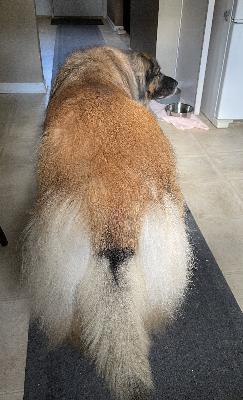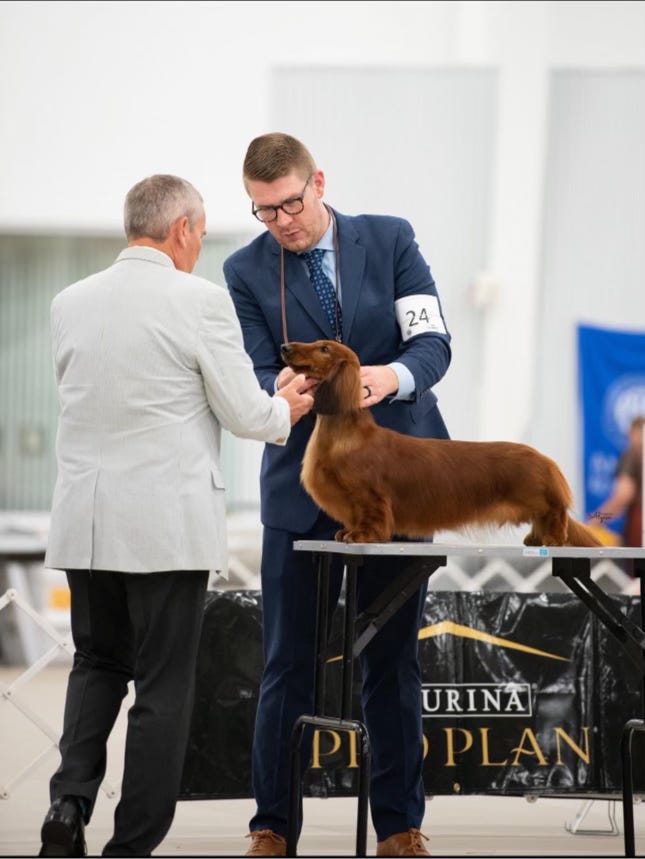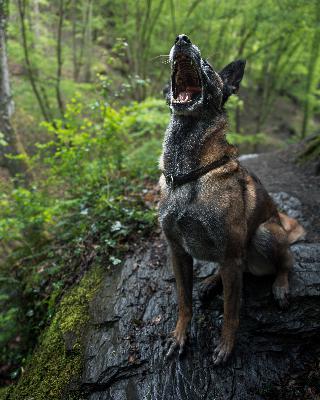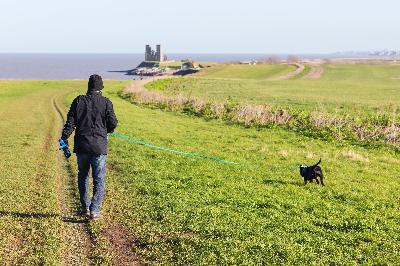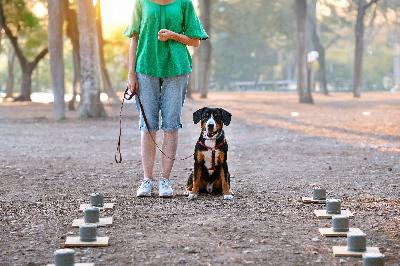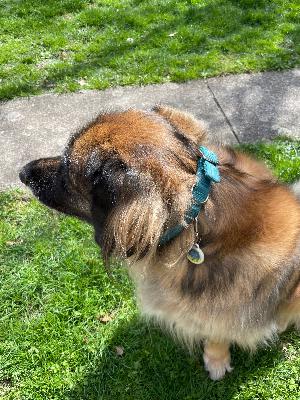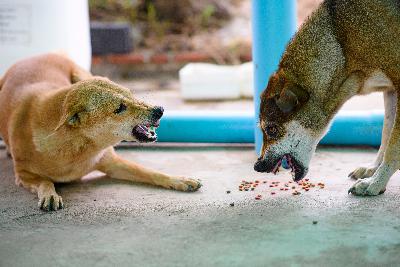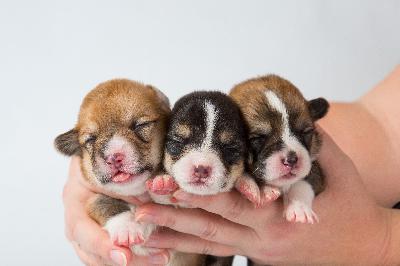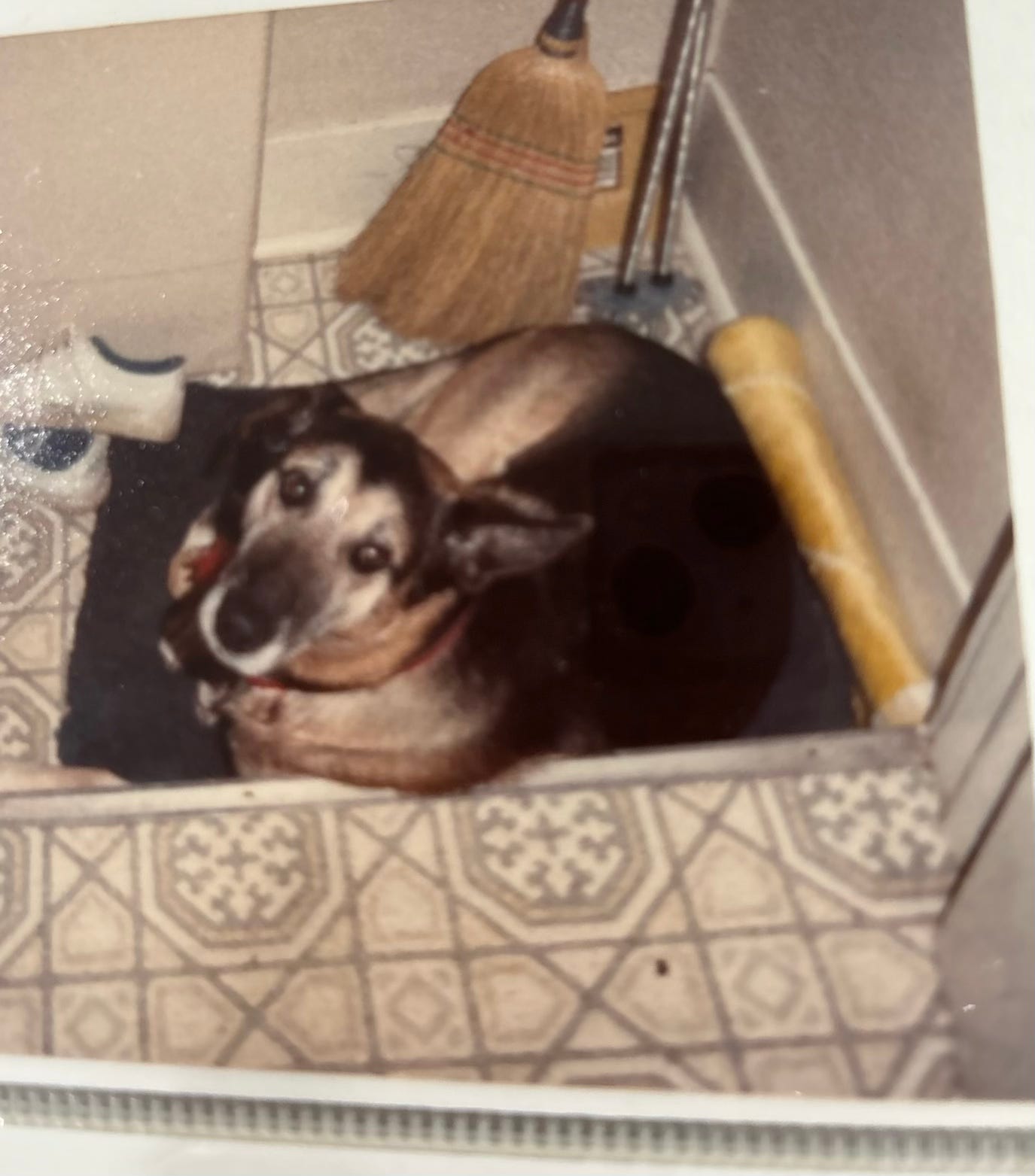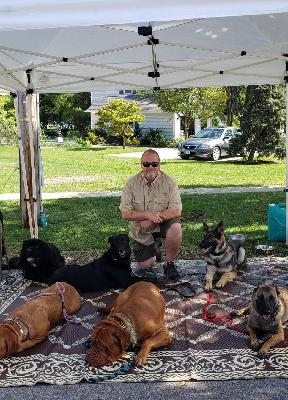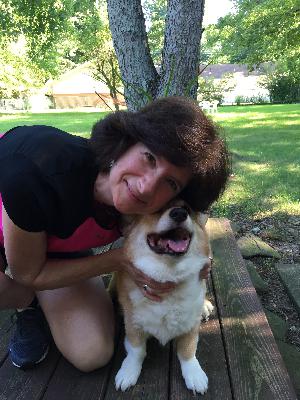Reactivity and Aggression
Description
Aggression in dogs is a serious issue which always needs to be addressed. Some dogs are reactive, but not aggressive, towards other dogs. Some are aggressive towards dogs and some are aggressive towards people. I hope to clarify the difference between these behaviors and explain some of the reasons why dogs act out in an aggressive manner. Getting to the root of the behavior and why it is occuring is key to a rehabilitation plan for the dog.
Some dogs show aggression when protecting their human, their territory, or things of value. Other dogs show aggression when in a state of uncertainty and fear. Very few dogs that I have encountered are aggressive due to their dominant temperament. Dogs are not born aggressive. The environment, which includes the humans around them, can contribute to developing aggressive behavior.
Reactivity is when a dog barks, lunges, shows their teeth, or the hackles are raised on their back. They are reacting to things in their environment. Sometimes reactivity can be mistaken for aggression because the dog’s reaction can appear to be intense. Aggression is taking it to the next level of intensity and the dog bites either another dog or a human. However, just because your German Shepherd may have bit a stranger while he was protecting you, it doesn’t mean that your dog will bite all humans after that incident. It is important to know the traits of your dog and seek the guidance of a professional dog trainer to help manage these types of breed traits and identify potential triggers that cause the reactivity and/or aggression in your dog.
The training I received at Petco was based on the positive reinforcement philosophy. The company policy prohibited dog trainers to work with any kind of reactivity or aggression. I probably dealt with more reactive cases than what Petco wanted me to. However, I knew my limits and I was not qualified to handle a certain level of intense reactivity that could turn into aggression. I had no formal training on how to deal with it. Therefore, I referred these cases out to Chuck Stella, owner of Elite K911.
I met Chuck almost 15 years ago. It was very rare when I had to refer aggressive cases to him, but it was a necessity nonetheless. The dogs I referred to Chuck would take part in the board and train service that was and still is offered at Elite K911. The dogs stay on premise and trainers work with the dog to discover the root of the aggression and devise a rehab plan to help the dog and the humans live harmoniously together. Whenever I come across a dog that is beyond my expertise, I still refer them to Chuck, as well as Gary Flynn, an excellent dog trainer who has been a guest on my podcast.
Presently, I still base my assessment of a potentially aggressive dog as I did many years ago while working at Petco. I observe the dog’s body language, how it interacts with me first, then with their pet parent, and finally with other people. If a dog has bit their pet parent, I will find out what happened which caused the dog to act that way. If a dog has bit strangers, I will find out what environment and position the dog was in, in relation to their pet parent. For example, if a dog was out in front of their handler, the dog may be in protection mode. In this case, a dog should be walked in the heel position to confirm that they are being led by their handler. Their handler does not need to be constantly protected.
Conversely, if a dog is a cautious dog and is also allowed in front of their handler, they feel more insecure and may lash out because of that. This type of dog prefers to be led than to lead. They don’t want to make the decisions on how to react to stimuli in their environment. They prefer their handler to make those decisions.
I also assess the dog’s temperament and body language. Finally, I feel I have a sixth sense which picks up the dog’s energy. I always tell people I am way better at sensing a dog’s energy than people’s energy. Dogs can’t fake how they act or feel. People can be experts at it!
I will work with the dog that is having aggressive tendencies, as long as the dog lets me handle them. The best way for me to really get to know a dog is by walking them on leash. I may try different tactics, and specific walking tools to come up with how to manage this dog in different scenarios. A lot of times, I am successful. However, when I have exhausted my options and I am not seeing any improvement, I will refer this dog to either Chuck or Gary. Thankfully, this doesn’t happen a lot. The good news is the majority of dogs that come my way can be rehabbed and very few have unfortunate outcomes.
Cesar Millan, a famous dog trainer/behaviorist whom I admire, says the true nature of a dog is to be calm and confident, to exude love, and to be joyful. Everyone wants to be around this type of energy. We all know it when we experience it. My previous dog, Hank the Corgi, did not have it. My current dog, Ebi the Leonberger, does. Part of that is due to the amount of training and knowledge, or lack of knowledge, the pet parent has about dog behavior. The other part is their temperament and true nature that Cesar Millan speaks of. Dogs do not want to be in an aggressive state. They prefer to be in a calm and submissive state of mind. They strive for balance in any pack they are in. It is when they cannot achieve a balanced state that they act out, sometimes in an aggressive manner.
Chuck recounts on our podcast how it pains him to see dogs who want to be dogs, but their pet parents get in the way. Some people have their own version of how dogs should be trained, which goes against what professional dog trainers believe. It is necessary to make the pet parents understand dogs are animals with certain instincts which are different than ours. We have to call out the pet parents when they try to anthropomorphize their dogs. This is when humans project human emotions and logic on to their dog. They explain their dog’s behavior using human logic and reactions, and not basing it on dog psychology. This is one way that pet parents get in the way of fixing their dog’s behavior.
Chuck believes dogs are survivalists. Their brain is always in survival mode. They assess their world by determining if they need to fight or flee any given situation. It is up to us humans to assure them through our confident and consistent leadership that “we got this.” It is through repeated events that are handled in this way, when the dog begins to trust us. The majority of dogs do not want to handle unknown situations. They much prefer to surrender that job to their leader.
It is when this leadership and trust are not present that the dogs become unstable. We cannot love our dogs into changing their behavior. There is a time and place when it is appropriate to show affection towards our dogs. However, what typically happens is the pet parents will pet the dog who is barking or is scared. This reinforces the exact behavior in the dog they are exhibiting in the moment.
From a dog’s point of view, petting is a reward. Ultimately, you are rewarding the dog for barking or you are rewarding the dog for its current fearful state of mind. That coupled with saying “It’s okay, it’s okay” in a soft voice, is not only rewarding the dog, but also demonstrating that their leader is no longer calm and confident. In the dog’s eyes, their leader has weak energy and therefore there must be something to be fearful about. This is another way pet parents get in the way of rehabbing their dog.
Always remember the behavior you are reinforcing in the dog when you pet them or give them a treat.
It is very rare to come across truly aggressive dogs. According to Chuck, people tend to quickly label a dog as aggressive, even if the dog is not biting, but is growling and showing their teeth. These are all warning signs a bite may be imminent, but doesn’t mean the dog is aggressive. There are many reasons why dogs may act out in an aggressive way, but it doesn’t mean that this dog should be labeled aggressive. So many of these aggressive tendencies can be managed by teaching the pet parent how to handle the dog when triggered.
In order to highlight the issue of reactivity, I will cite examples starting with my own dog. When Ebi was about 15 months old, she went into heat. During those months prior to the heat cycle and post heat cycle, she didn’t want any stranger dogs near her. She started barking at any dog passing by, sometimes rather intensely. I was able to manage her 110 lb. body, but it was challenging. I did not know at the time this could happen during a heat cycle. I had to work through this reactivity in order to rehab it. This took a long time. As of today, she may bark and jump a little at certain dogs who stare her down, but she has never gone after a dog aggressively.
It was around this time that she started barking a particular bark when she was outside in the backyard. A key instinct of a Leonberger is to protect their territory from predators. She started barking at pedestrians walking by on a nearby busy street. I had to go outside each time to put her in a sit by my side, which communicated to her I was now in charge, and her job to alert me of the stranger was done. She still does this occasionally today. It’s difficult to fight Mother Nature and that actually is a useful trait to have. I want my dog to alert me, but then I also want her to stop once I get involved to manage the situation. If I never addressed this issue, some other negative behaviors could have formed and she could have become aggressive.
Both of these examples are reactivit


